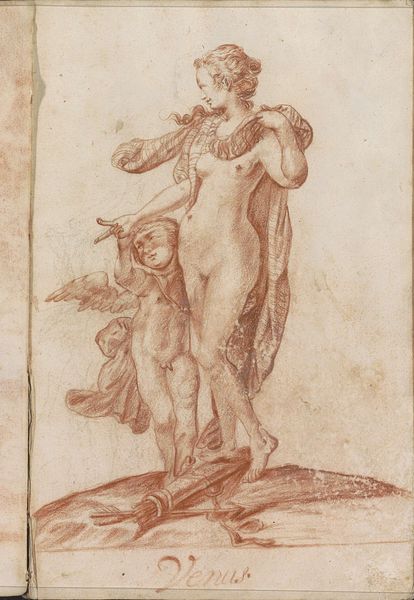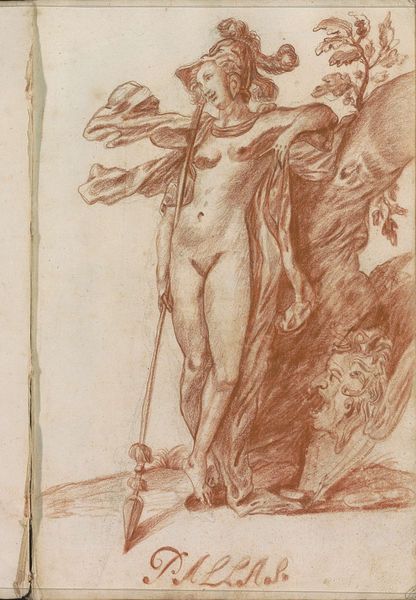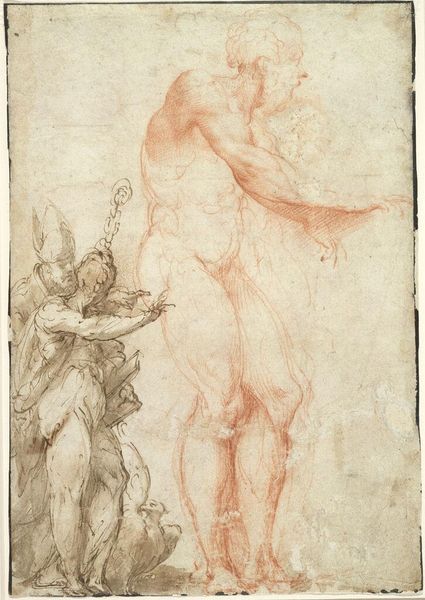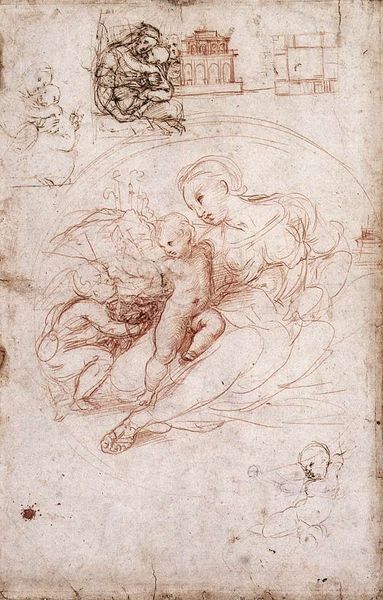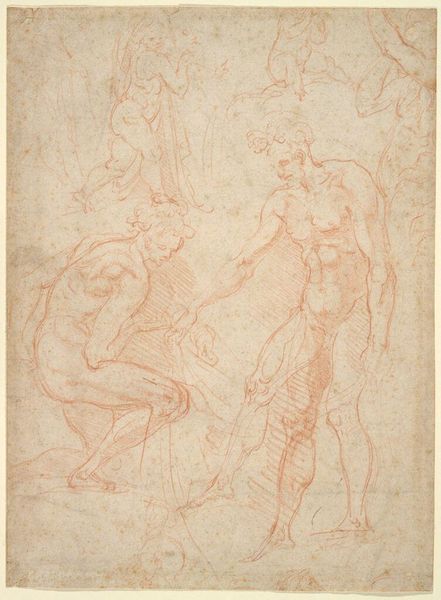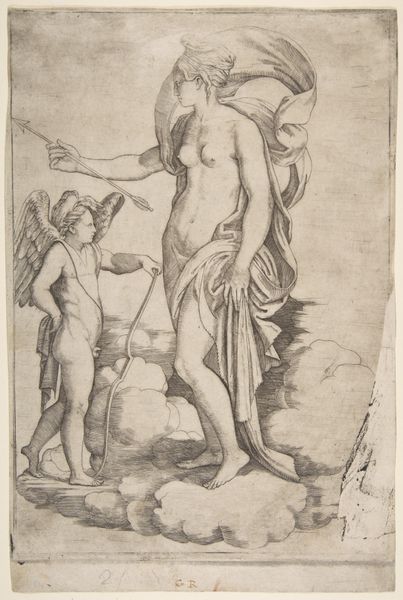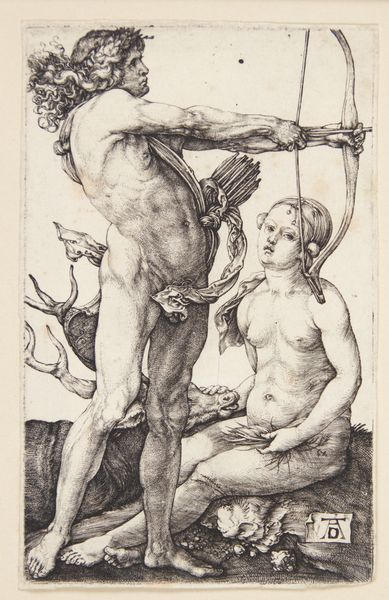
drawing, charcoal
#
drawing
#
pencil sketch
#
charcoal drawing
#
figuration
#
11_renaissance
#
pencil drawing
#
portrait drawing
#
charcoal
#
history-painting
#
italian-renaissance
#
nude
Dimensions: 26.3 x 19.7 cm
Copyright: Public domain
Curator: The rendering style immediately draws my attention. It feels very dynamic for a drawing, perhaps conveying urgency? Editor: Indeed. Let's contextualize that initial feeling. This piece, titled "Psyche presenting Venus with water from the Styx," comes to us from Raphael around 1517. Currently residing in the Louvre in Paris, the work employs charcoal and pencil to depict this mythological scene. Curator: It’s interesting how Raphael presents Venus—typically a symbol of beauty and love—as almost imposing, physically dominant over Psyche. Her nude figure is strikingly muscular. What kind of social power dynamics were in play that allow for such an unexpected and provocative rendering? Editor: That’s precisely the fascinating element. Raphael worked in a time highly dictated by wealthy patrons; he negotiated not only artistic expression but also social currents through commissions, revealing the values of the culture shaping it. What narratives about women did he explore? How did ideas of beauty influence depictions of gender, class, and status? These figures reflect a highly constructed view. Curator: It pushes us to examine the politics inherent in depictions of women, even within mythological contexts. The power relationship between these women, I imagine, really captivated early 16th century Italian audiences. How did the artist portray and confront societal expectations or did it reinforce specific hierarchies? Editor: That ambiguity may, in itself, be the point. The lack of a clear narrative thrust allows the work to serve diverse audiences. It became a canvas where social, philosophical, and art historical views projected assumptions about morality, hierarchy, beauty, and, power onto these mythical figures. I mean the vase represents a journey, mortality—concepts loaded with possibilities. Curator: So, as viewers, we are not passive recipients, but actively interpreting this scene through our own 21st-century lenses, considering power, gender, and representation. What questions might we start to explore? Editor: Precisely. Artworks act as catalysts; in viewing, reflecting, and understanding a given context we open up conversations about where art—and culture—has come from and where we’d like it to go. The goal is to encourage reflection through the image, and dialogue for generations to come.
Comments
No comments
Be the first to comment and join the conversation on the ultimate creative platform.
